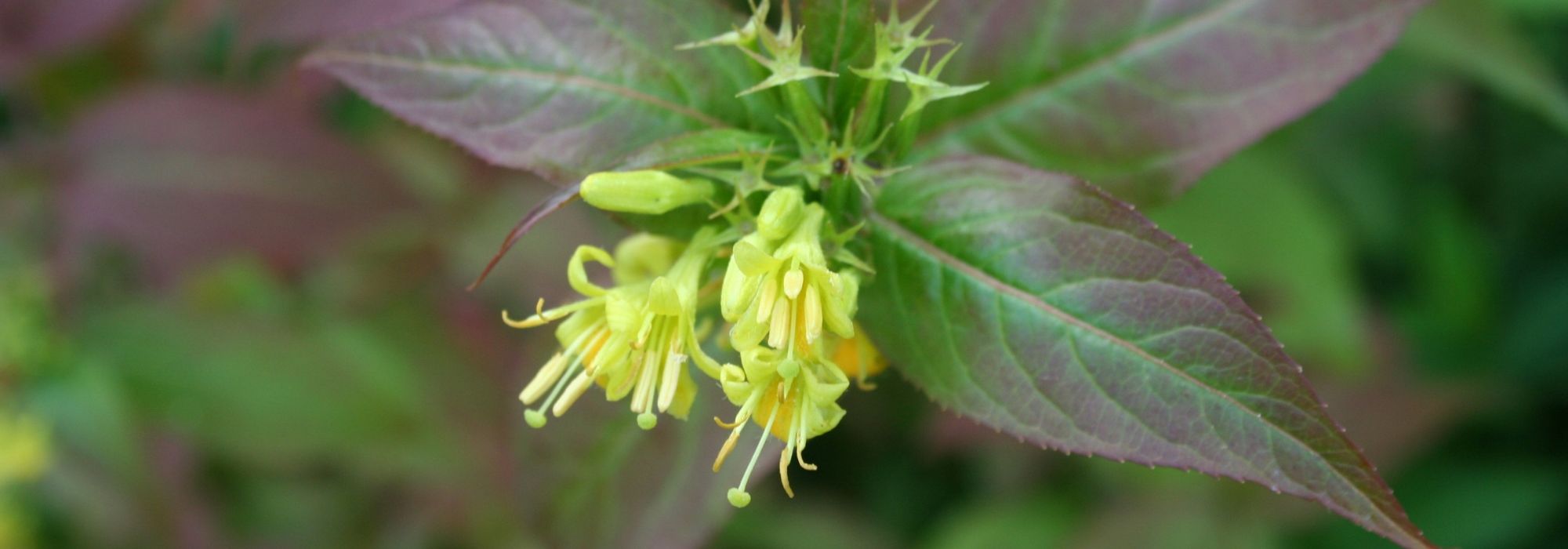
Diervilla, Bush honeysuckle: planting, pruning and care
Contents
Diervillé, in a nutshell
- Diervilla are deciduous bushes that can serve as groundcover in shaded areas.
- Their sulphur-yellow flowering, spreading over spring or summer, is quite inconspicuous but foliage colouring is often very decorative.
- These hardy bushes are easy to grow in drained, relatively dry to moist soil, neither too acidic nor too calcareous.
A word from our expert
Diervilla are ornamental bushes with deciduous or semi-evergreen foliage, related to Weigela. They are native to North America from southern Canada to Alabama and generally inhabit forested mountain areas, which explains their excellent hardiness. The three recorded species in the genus have a tendency to produce suckers, to varying degrees, but never become a problem. Their spreading branches allow them to cover the ground, bringing a touch of lushness to shaded areas crowded by tree roots and therefore difficult to plant. Diervilla x splendens is a hybrid more robust than its parents and bears larger flowers and attractive foliage colours from spring through to autumn.
The height of the bush ranges from 1.30 m for the Diervilla lonicera to 2.00 m for the Diervilla rivularis, with a spread of 1.50 m to 2.50 m. Terminal clusters of small flowers delight pollinating insects and display fresh yellow-green then lemon-yellow hues that brighten the understorey in May–June for Diervilla lonicera and in July–August for the other species. They open on the previous year’s twigs or on the current year’s shoots depending on their flowering time. They fade to cream-white as they age and are then replaced by small dark-red berries.
Diervillas are hardy in most of our regions, down to at least -15 °C. They adapt to a wide diversity of soils if well drained and tolerate periods of moderate drought. They are woodland plants that appreciate shade but dislike arid, scorching conditions, making them perfect for enlivening a neglected spot under trees or in the shade cast by a building.
Depending on your soil and climate, you will find great ideas for planting combinations in our selections of bushes for semi-shade or in our dedicated section, “under the trees”.
Description and botany
Botanical data
- Latin name Diervilla
- Family Caprifoliaceae
- Common name Diervillé, Diervillée
- Flowering between May and August
- Height between 1 and 2 m
- Sun exposure sun, partial shade, shade
- Soil type fairly cool, well-drained
- Hardiness very good (-15 to -25 °C)
The genus Diervilla contains only three species, lonicera, rivularis and sessilifolia, with an intergeneric hybrid D. x splendens between lonicera and sessilifolia. It belongs to family Caprifoliaceae like honeysuckle (Lonicera) and weigela (Weigela), to which it bears a strong resemblance despite less spectacular flowers. The genus was separated into Diervillaceae with Weigela under APG II (2003) then reincorporated into Caprifoliaceae in APG III (2009). The genus is native only to North America, in the eastern United States.
These bushes have a spreading, bushy habit that often reaches no more than 1.30–1.50 m in height and can cover the soil more or less rapidly depending on species. Diervilla lonicera, the most vigorous, is used to counter invasive species or to stabilise slopes. The red colour of the young wood makes its suckers easy to spot. Diervilla rivularis reaches larger dimensions, up to 2 m in every direction. Other species remain between 1.3 and 1.5 m in height and spread.
Diervillas generally have deciduous, opposite, lanceolate leaves of light to medium green with slightly dentate margins. The species sessilifolia is evergreen and shows a reddish venation on leaves borne on arching shoots. Its cultivar Cool Splash has dark green leaves marginate with cream. Bronze-coloured new shoots on Diervilla sessilifolia and x splendens precede flowering in terminal or axillary clusters. Autumn also offers a fine display of foliage in yellow, orange and purple tones. Diervilla x splendens displays splendid colours from early summer, when the abundant clusters of golden-yellow flowers stand out against dark green foliage tinged with purplish red, even in shade. D. splendens ‘Diva’ is purple year-round before turning violet-red in autumn.
Diervilla flowers have a calyx of five fused, elongated sepals, a tubular corolla 1–2 cm long, more or less bilabiate, open on five narrow lobes, five stamens and one prominent pistil. On fading the colour becomes creamy white before small dark red berries form. The diervilla-honeysuckle (D. lonicera) is the earliest, flowering in May–June. Others flower in early summer.
Diervilla are named after French surgeon and writer Sieur de Dierville (1699–1711), who brought back Diervilla lonicera from his 1699 voyage to the Acadian region of Canada. Tournefort dedicated the genus name to him.
Main Diervilla varieties
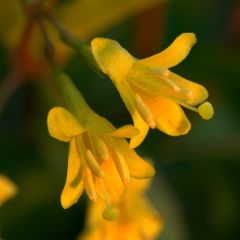
Diervilla splendens
- Flowering time August, September
- Height at maturity 1,20 m
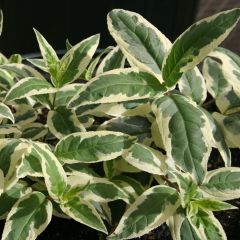
Diervilla sessilifolia Cool Splash
- Flowering time July, August
- Height at maturity 1,20 m
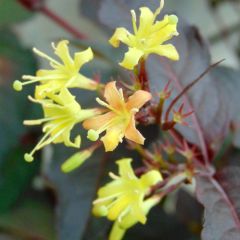
Diervilla splendens Diva
- Flowering time August, September
- Height at maturity 80 cm
Discover other Diervilla
View all →Available in 2 sizes
Available in 2 sizes
Available in 2 sizes
Available in 1 sizes
Available in 1 sizes
Available in 2 sizes
Available in 1 sizes
Available in 1 sizes
Available in 1 sizes

Available in 2 sizes
Planting
Where to plant Diervilla?
Diervillas are understorey bushes that tolerate dry soil and all exposures but prefer semi-shaded to shaded positions, beneath a tree or close to a building. They can easily establish between a tree’s roots thanks to their suckering character and low requirements.
They tolerate all fresh to dry, well-drained soils, though avoid soils with excessive lime. Their hardiness is excellent, down to around -25°C.
When to plant?
Diervilla is best planted in autumn or spring to ensure good establishment.
How to plant?
This plant is easy to grow and should suit any areas of the garden disadvantaged by deep shade. Space plants 1 to 1.50 m apart to cover ground or form a non-opaque medium-height screen.
- Dip the bucket into a bucket of water to thoroughly moisten it.
- Dig a hole three times wider than the root ball and loosen the soil around with the tines of a garden fork.
- In heavy soil, add a few shovelfuls of sand or gravel to ensure good drainage around the roots.
- Add well-rotted manure or well-rotted compost if soil is sandy.
- Set plant into the planting hole.
- Replace soil and firm lightly.
- Water.
Planting in a pot is not recommended given the suckering character of the bush.
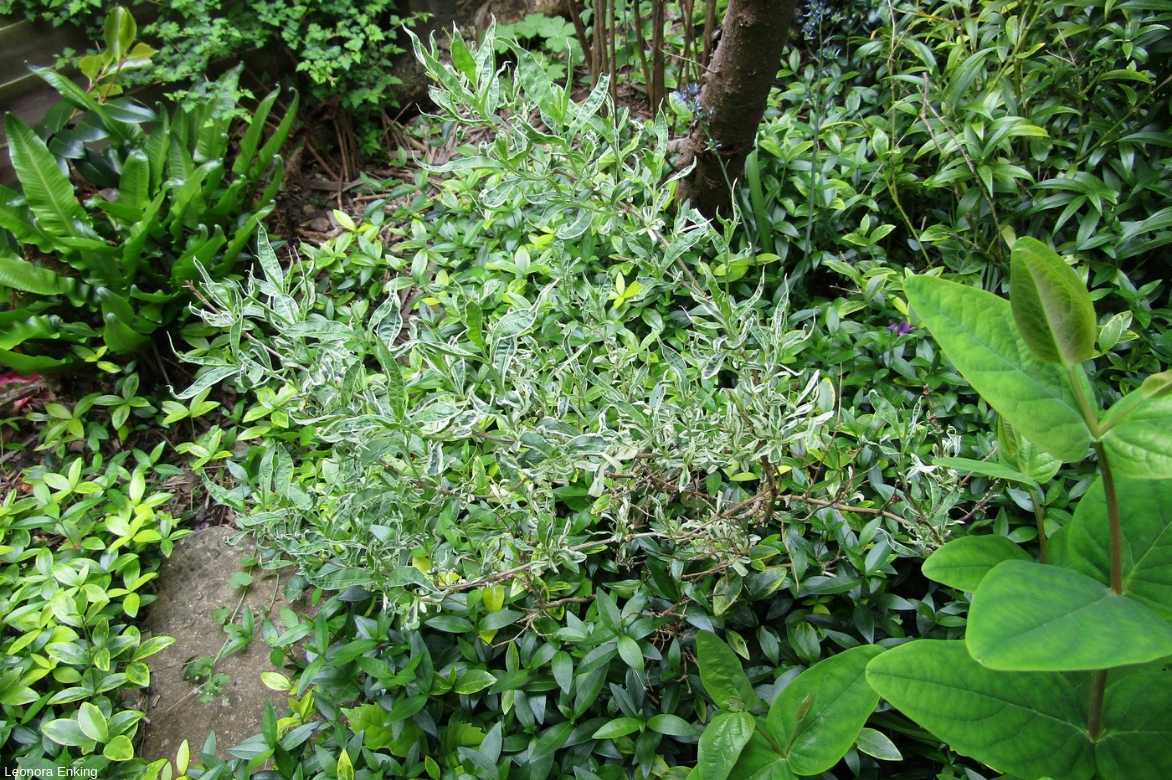
Diervilla sessilifolia ‘Cool Splash’ with variegated, bright foliage
Care, pruning
Diervillea is not very susceptible to diseases and pests.
Remember to prune it after flowering. Simply cut off the inflorescences. Then, every 3–4 years, renew the whole clump by pruning back hard in winter or at the start of spring to give it a more compact shape.
Propagation
The simplest method of propagation is to separate suckers in autumn.
Separation of suckers
Diervilla produces suckers that are easy to separate, preferably in autumn, with a sharp tool once they have formed roots. Replant them immediately, cutting the stem back if it is too long.
Uses and companion plants
Diervillas are groundcovers easy to establish in all types of well-drained soils without excessive lime, for nearly all exposures. They help to stabilise sloping ground and limit spread of invasive plants such as brambles or ivy.
They can also be used to plant up an understorey, which they will brighten with their sulphur-yellow flowering, colourful shoots, autumnal display or with the effect of cream-variegated foliage of some cultivars such as Cool Splash. Their compact stature is ideal for small gardens or enclosed spaces. They can establish in sandy soil and stabilise dunes or embankments thanks to their suckers (underground stems bearing roots).
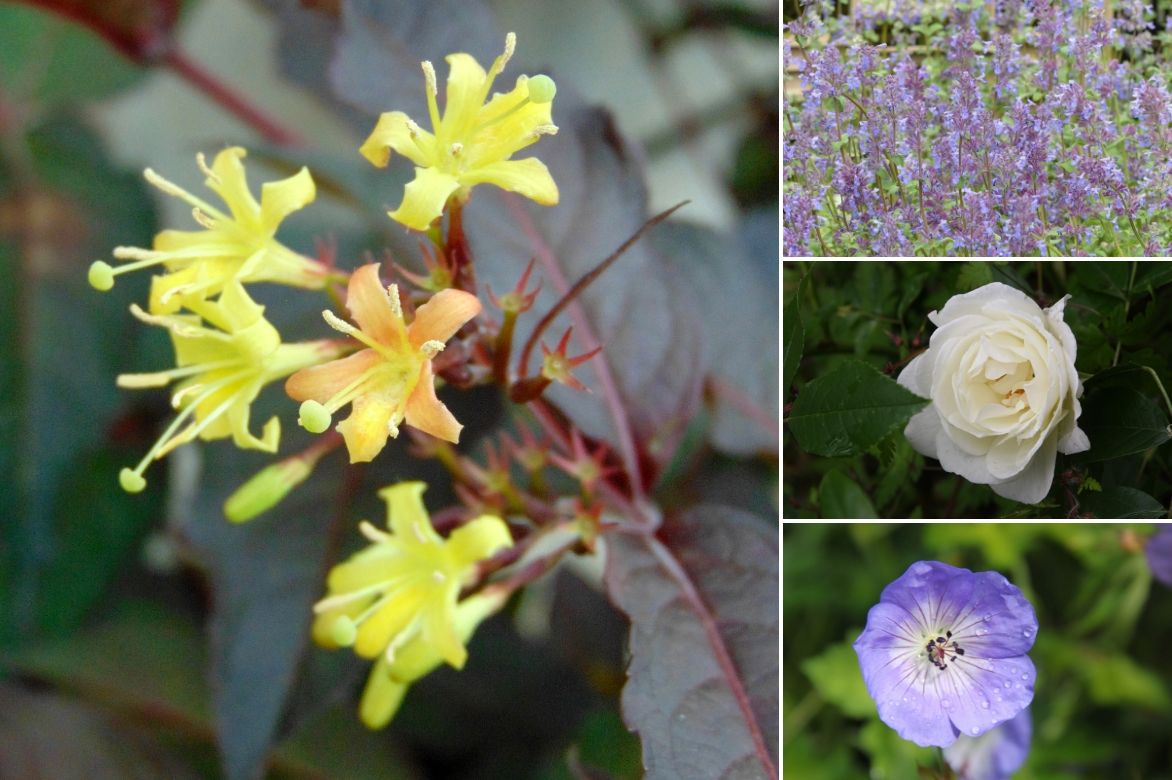
An example of a combination: Diervilla splendens ‘Diva’, Nepeta faassenii ‘Six Hills Giant’, Rose ‘Iceberg’, Hardy geranium ‘Azure Rush’
They can also be placed among a bed of standard-trained roses, accompanied by undemanding perennials such as Nepeta, hardy geranium or artemisia. However, exposure should not be too hot. In southern France, prefer partial shade or woodland shade, for example with Mahonia, acanthus or laurustinus, or on the north-facing side of your house. The Diervilla sessilifolia ‘Cool Splash’ develops by suckering at the roots, plant in shade. It will brighten darker parts of your garden, as a specimen or in a mass to dress the base of a tree. In a bed, pair it with shade-loving perennials without mixing colours too much.
To go further
Discover our range of Diervilla.
- Subscribe!
- Contents
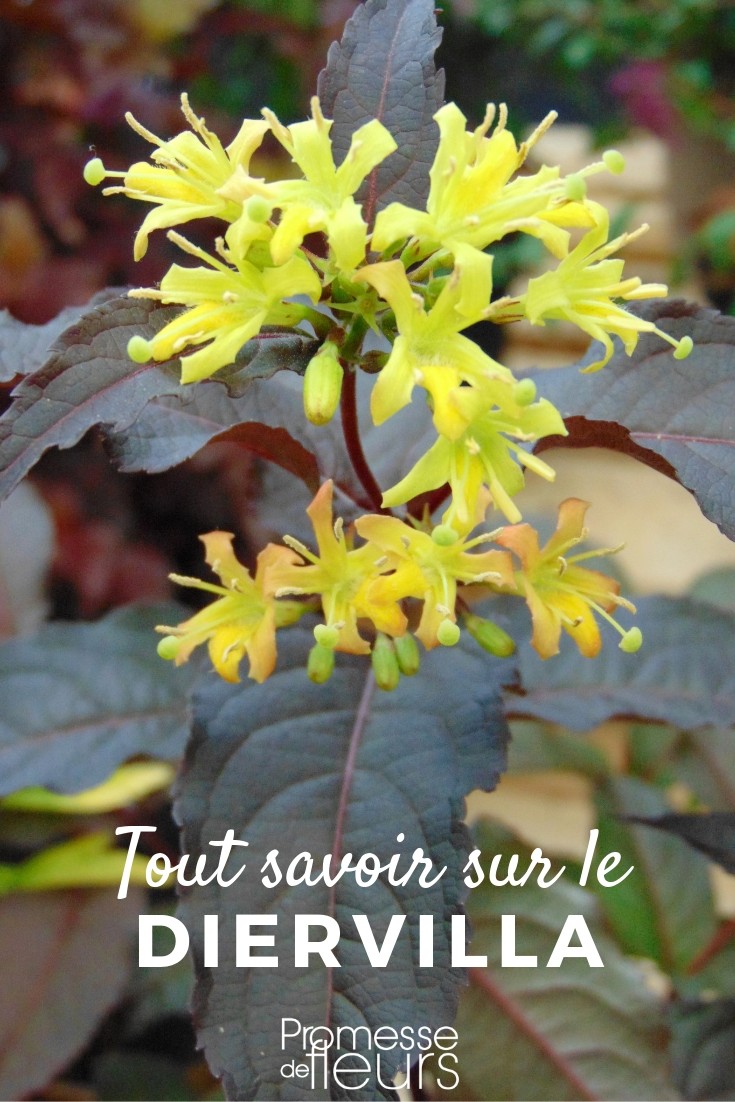































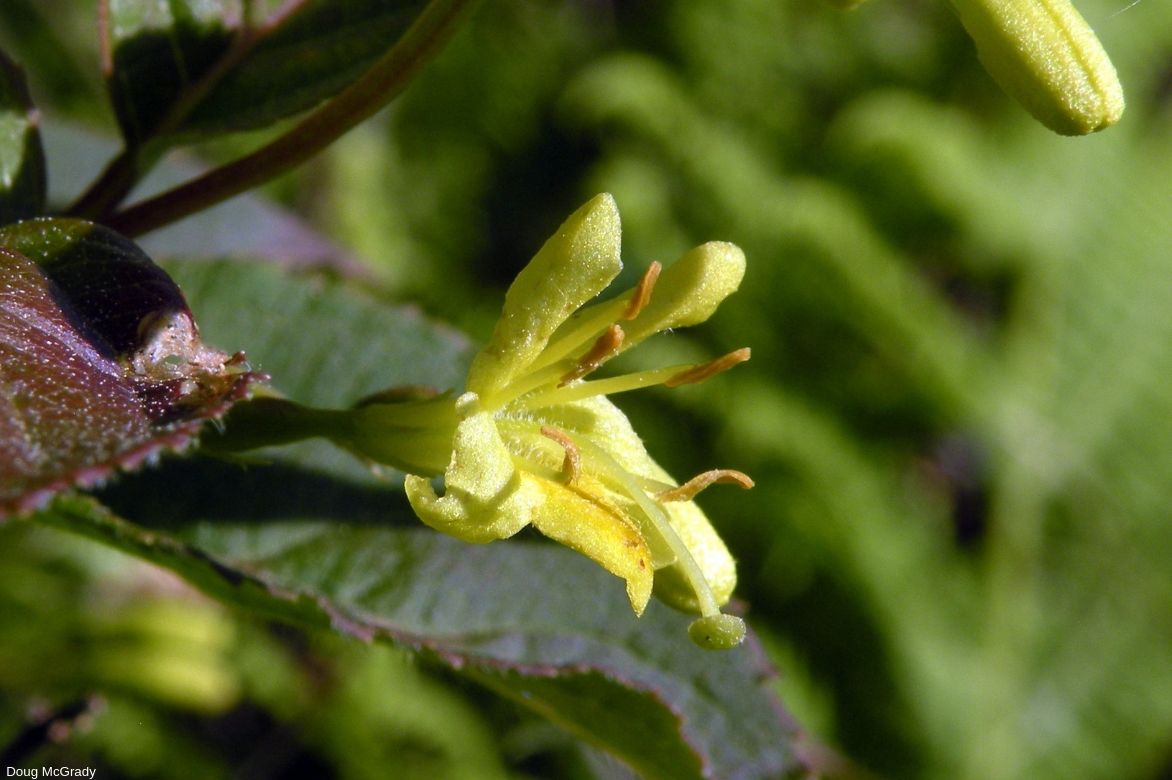

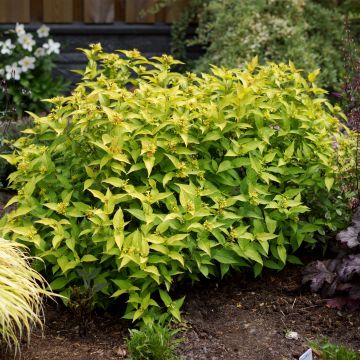


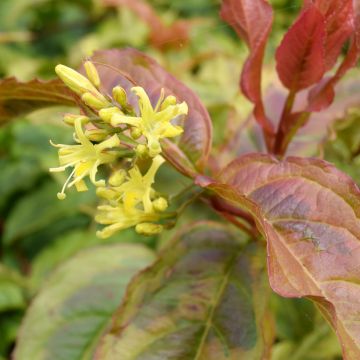
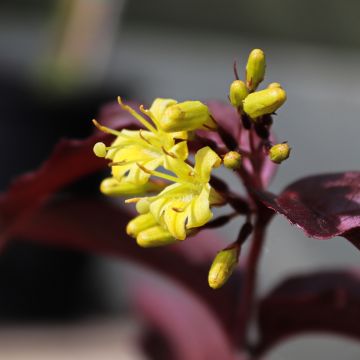
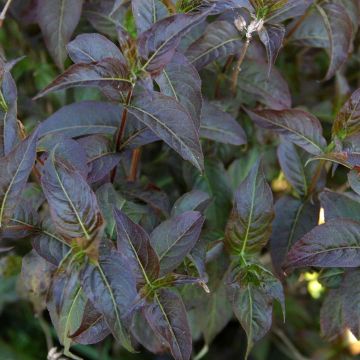
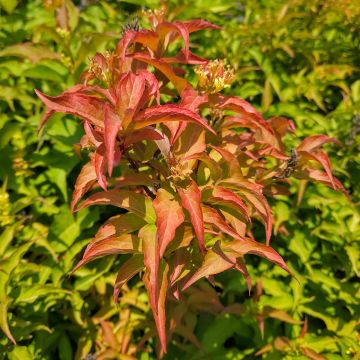

Comments